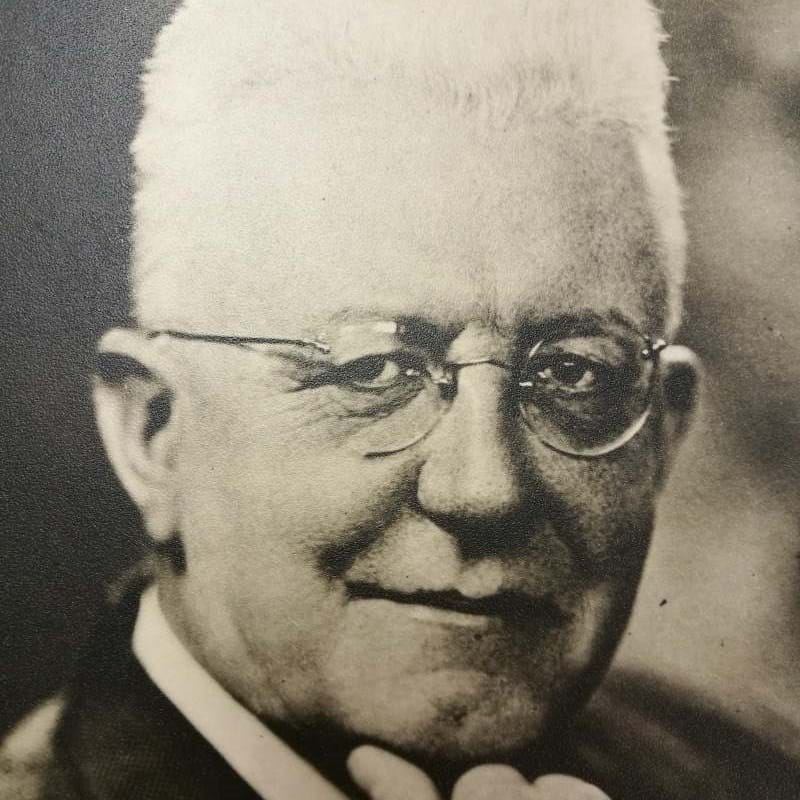
Hugh Griffiths: 1945—1947
Hugh Griffiths was born on 28 July 1891 and, at the age of fifteen, he scored a success which still remained a record at the time of his Presidency, by winning in free competition, with no age limit set, a National Scholarship in Chemistry. This was a remarkable achievement as the other successful candidates were much older than he was; in one case nearly twice his age. This was a turning point in his career and opened wider fields to him than had been possible to his forbears.
He subsequently undertook three years' training at Imperial College - Royal College of Science, where he gained a Diploma of ARCS and BSc (First class honours, London). He was then appointed a Demonstrator, a position which he only held for about a year before taking up an appointment with Nobel's Explosives Company Ltd. Here the manufacturing side of the chemical industry was presented to him in a practical and objective way, and he began to examine the possibilities of physical analysis of plant performance.
During World War I Hugh Griffiths' abilities were in great demand for designing and building manufacturing installations of many different kinds: heavy chemicals, intermediate products for dyestuffs, synthetic drug materials, and a great variety of specialised and delicate materials. He started a chemical engineering business in partnership with another student of the Royal College of Science - Harold Talbot - but after they separated he continued alone in the business which he was still directing at the time of his Presidency.
Business developed on commercial lines supplying special chemical plant and industrial process plant, and many interesting and useful contacts with personalities in the chemical world were made, the most important to the business probably being that with Dr Emil Passburg, the designer of vacuum driers, and it was this contact which aroused his interest in the application of high vacuum.
Hugh Griffiths' work on continuous crystallisation was of possibly even greater technical importance than his high vacuum work. Crystallisation in moving crystallisers had been an achievement of the previous quarter of a century and tended to displace more and more the crude, haphazard and wasteful processes which were all that were known to industry in 1900. The development was in no small measure due to Hugh Griffiths' personal work which arose from a complete investigation of all the published work of others, from closely reasoned conclusions and from mathematical deduction. His papers on crystallisation were particularly important, giving a clear indication of the industrial applications of growth in metastable solutions.
In 1932 he joined the board of British Carbo-Union Ltd, and devoted much of his energy to the building of installations for the recovery of solvents and the extraction of benzole by adsorption processes; his presidential address on adsorption disclosing a new picture of this physical process - the assumptions of the capillary condensation theory were re-examined and corrected, and it was boldly suggested that the theory afforded the best interpretation of the range of adsorption phenomena of special interest in chemical engineering applications.
Hugh Griffiths also carried out a lot of hard work in connection with education and with the growth and development of the Institution. As a lecturer in chemical engineering at Battersea Polytechnic from 1917 to 1932, following in the steps of Professor Hinchley, he was able to give effect in some measure to what he felt so strongly himself, the great importance of teaching. He also worked for many years on the task of developing the examinations of the Institution and bringing them to a form in which they were not only a guarantee of the capacity of the successful candidate but in themselves interesting. The standard and status of chemical engineering was vastly strengthened and raised by Hugh Griffiths' work so that the profession was held in esteem throughout the world.
Return to list